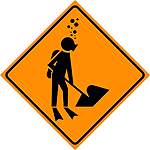|
| |

|
|
| < Prev. month |
Next month > |

|
This page under construction.
Here are some of the topics that will be covered in this chapter. More text and images will eventually be added to this section. Thank you for your patience.
|
- Larvae of geoduck clams settle out of the plankton in estuaries during September and October. Over the winter they will metamorphose into small clams and begin digging the deep burrows where they will live for the rest of their lives.
- Top smelt and arrow goby populations peak in Elkhorn Slough in September and October.
- Migrant birds (including black turnstones, marbled godwits, willets, black-bellied plovers, lesser yellowlegs, long-billed curlews, red knots, dowitchers, and least sandpipers) fill the coastal estuaries in September. Many are just passing through during their southward migration, stopping for a rest and a quick bite to eat. Others will spend the winter on the Central Coast. At high tide, these birds can be difficult to see as they hunker down in the marsh vegetation. At low tide, large flocks hunt for food on the mud flats.
- Red-necked phalaropes hunt for plankton in the open ocean and in shallow coastal ponds.
- Caspian terns, Forster's terns, and California least terns leave the Central Coast in September or October, after their young are fledged.
- Bat rays become most abundant in Elkhorn Slough in late September or October. They sometimes gather in large schools on flooded mud flats.

|
| |
